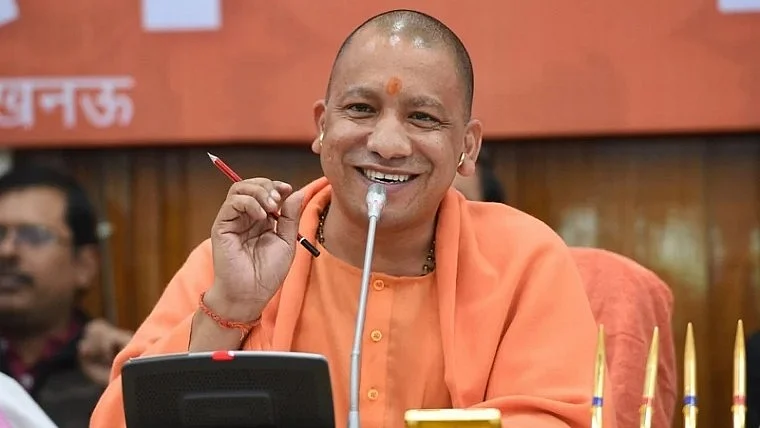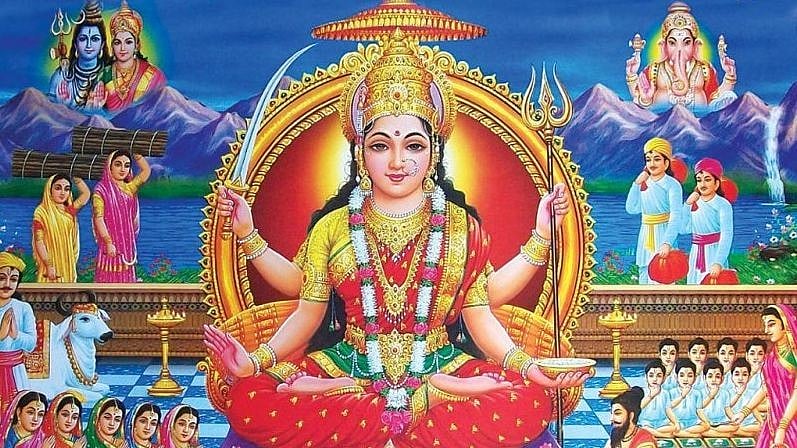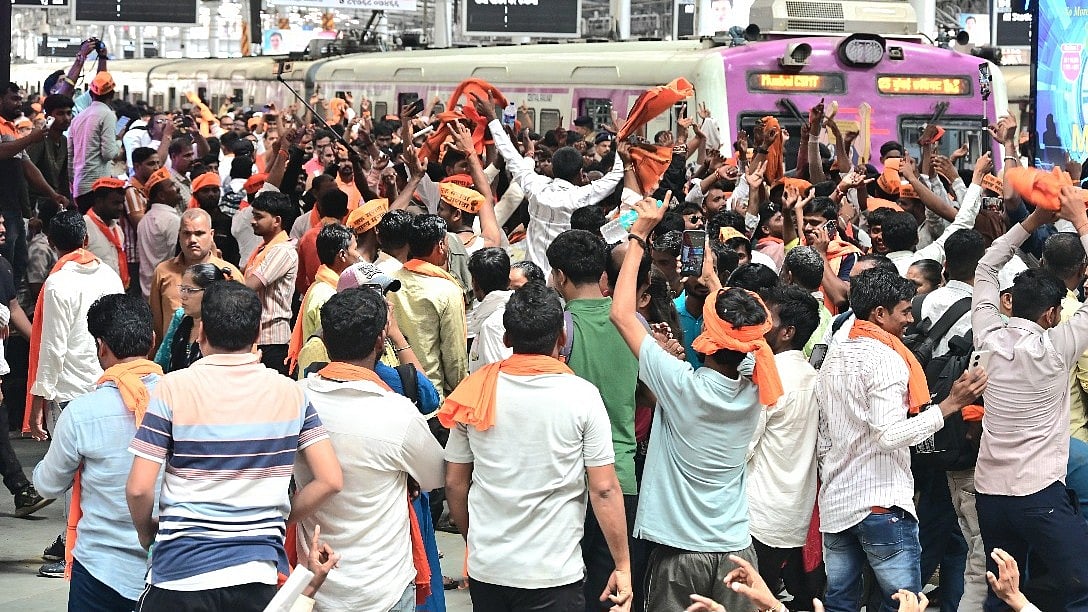What does one say about a woman who ruled the music charts and people’s hearts for most of the 92 years that she lived? Her songs are still playing, they make us sigh and smile. The golden voice will never be silenced. The timeless melodies are a legacy to be passed down from one generation to the next.
Lata Mangeshkar entered the world as Dinanath Mangeshkar and Shevanti’s first child on a Saturday night — September 28,1929 — in Indore. Her father was the owner of a theatre company and a reputed classical singer and she started getting music lessons from the time she was five.
Her sister, Asha Bhosle, had once recalled being woken up at dawn by a delicate tinkle. Peeping from behind the quilt, she saw her didi sitting on the floor, her long plaits coiled around her, the tanpura in her hand, lost in the music.
When she was nine, a young Lata wowed the audience in Manmad in one of her father’s plays, Subhadra. She had persuaded him to let her step in as Narad, as the actor playing the role had not turned up. She sang the bhajans with such purity that she brought tears to her father’s eyes.
In 1941, she had quietly entered the Khazanchi music competition without her baba’s knowledge, knowing he would not approve. The film was a blockbuster and the contest was to unearth new talent. Lata returned home proudly with a row of medals pinned on her chest and a dilruba. She also bagged a song in Vasant Joglekar’s 1942 Marathi film, Kiti Hasal. Ironically, the song was dropped, but she did make her Hindi film debut four years later with a song in Joglekar’s next film, Aap Ki Seva Mein.
Her baba died in 1942 and the only legacy he left her was his tanpura, the book of treasured compositions that lay under her pillow and the blessings of Lord Mangesh.
Lata was only 13 then and didn’t have the impeccable Urdu diction of the leading singers of the time, Noor Jehan, Suraiya and Shamshad Begum. What the slight Maharashtrian mulgi had was God-gifted talent and perseverance. By the time she was 19, she was recording two-three songs a day to keep the home fires burning.
After her father’s untimely demise, she had been offered a job by actor-filmmaker Vinayak Damodar Karnataki in his Prafulla Film Company in Kolhapur on a monthly salary of Rs 80. She acted in eight films, four Marathi and four Hindi, starting with a small role and a song in the 1942 Marathi film Pahili Mangalagaur. This was followed by Maze Baal and Master Vinayak’s first Hindi film, Badi Maa, which also featured her sister, Asha Bhosle, with Lata singing the bhajan, ‘Mata tere charnon mein’.
She suffered another jolt when her mentor and actress Nanda’s father, Master Vinayak, passed away on August 19, 1947. His film company was subsequently liquidated and Lata was back to making the rounds of studios, trying to convince filmmakers to sign her as an actress since not many had discovered her as a singer then. Many turned her away and life was a never-ending struggle.
It was during this time that she waited all day to meet Ghulam Haider and was gratified that even though six years had passed since she had won the Khazanchi music competition, the famous composer hadn’t forgotten her. In fact, he called her for an audition the next day.
She sang a song from Noor Jehan’s Zeenat. Haider was once again impressed and recommended Lata to Shashadhar Mukerjee for Shaheed. But the producer and Filmistan Studio boss thought her voice was too thin and young for the film’s heroine, Kamini Kaushal. The upset composer told him that he was making a mistake; one day, filmmakers would be crawling at this girl’s feet.
The same evening he whisked her off to Bombay Talkies Studio. In the train, he composed a song which he made Lata sing as he drummed out the beat on his cigarette tin. The song was recorded for Majboor which celebrated a golden jubilee run thanks to Lata’s songs like ‘Dil mere toda, o mujhe kahin ka na choda’ and ‘Piya milne ko aa’.
Majboor was followed by songs in Mahal, Barsaat, Andaz and Dulari the next year. Mahal whose ‘Aayega aanewala aayega’ haunts our collective consciousness to this day, was initially credited to Madhubala’s character in the film, Kamini, in the first batch of records released, as was the trend at the time. But when it played on All India Radio, listeners were so mesmerised by her voice, they called, asking for the singer’s name. AIR had to call the record company to find out, announcing it on air. From that day, Lata Mangeshkar became a household name.
She remained the biggest name in Hindi film playback for over seven decades, recording her last song, ‘Jeena kya hai, jaana maine’, for Dunno Y2… Life Is a Moment in 2015. From Vasant Desai, C. Ramchandra, Ghulam Haider and Naushad to Anil Biswas to Khemchand Prakash, Hemant Kumar, Salil Chowdhury and Roshan... From Madan Mohan, S D Burman and Kalyanji-Anandji to Laxmikant-Pyarelal, R D Burman, Gulzar and Rajesh Roshan… From Anand-Milind and Jatin-Lalit to Bappi Lahiri and A R Rahman… She has wowed generations of composers.
Lalit Pandit had recalled that while dubbing ‘Mere khawabon mein jo aaye’ she had suggested that she sing the line ‘Aa ke mujhe chhed jaaye’ in a way that would express Simran’s wonder as she fantasises about her dream lover. Her ‘ada’ added to the scene on screen.
Such suggestions were common with the ‘Nightingale’ as she crooned for every actress from Nargis and Madhubala to Kajol and Madhuri Dixit, enhancing their performances.
She has also held her own against phenomenally popular male singers, like Mohammad Rafi, Kishore Kumar, Mukesh, Hemant Kumar, Kumar Sanu, Udit Narayan and Sonu Nigam, doing live shows with Mukesh, Kishore Kumar and Hemant Kumar and wowing the expat audience at venues like Royal Albert Hall, Madison Square Gardens and the Kennedy Center among others.
She sang for more than 1,000 films in 36 languages and filmmakers like Raj Kapoor, Yash Chopra and Subhash Ghai admitted that Lata Mangeshkar not only gave them hit songs, she made their films evergreen hits with her golden voice.
Then, on February 6, Lata Mangeshkar moved on, leaving behind a world of grieving fans and a treasure trove of melodies.
And what was her treasure, apart from the tanpura her father had left her?
Veteran actor Biswajit Chatterjee, whose Bees Saal Baad and Kohraa have been immortalised by her ‘Kahin deep jale kahin dil’ ‘O Beqaraar dil’, shares that he had once noticed a ring on her finger, the five stones on it catching his eye.
When he asked about it, she had touched the ring to her forehead and reverentially told him that it had been gifted to her by the great Kundal Lal Saigal, who had liked one of her songs. It was one of her biggest treasures.











